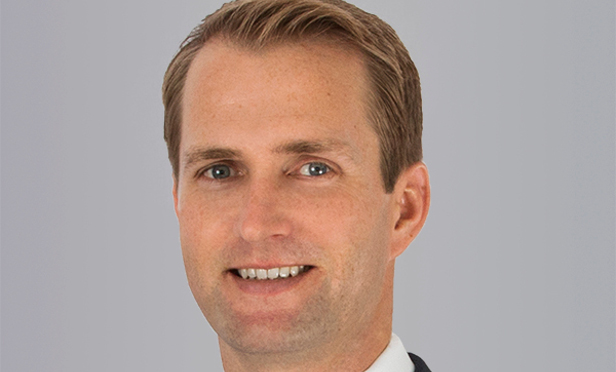 Ives: “Favorable demographics, a diversified economy, proximity to major medical academic institutions and an attractive climate makes San Diego one of the most attractive medical markets in the country.”
Ives: “Favorable demographics, a diversified economy, proximity to major medical academic institutions and an attractive climate makes San Diego one of the most attractive medical markets in the country.”
SAN DIEGO—The concept of timeshare space for smaller medical providers looking to cut overhead and avoid long-term lease commitments is starting to gain attention, Cushman & Wakefield’s senior director, healthcare practice group, Travis Ives tells GlobeSt.com. According to a recent report from the firm, the San Diego medical-office market continues to tighten, and another recent medical-office report from JLL found San Diego medical-office occupancy increased in the first quarter of the year, posting an increase of 28,144 square feet of positive net absorption.
The current overall San Diego County direct vacancy rate of 6.6 is 51% lower than in 2009, when it peaked at 13.6%, the JLL report continues. Most all of the San Diego medical-office submarkets recorded minor movement in their total occupancy in the first quarter, with only two submarkets recording positive or negative movement greater than 10,000 square feet: the Oceanside/Vista submarket increased its occupancy by 32,728 square feet, dropping into single-digit vacancy (9.8%) for the first time since 2008. La Jolla/UTC/Sorrento posted 20,146 square feet of positive net absorption. Also, the weighted average asking rental rate for medical office space continues to climb, with a current year-over-year increase of 4.9% for the county overall.
We spoke with Ives about the report and how the low vacancy rate is affecting development of medical-office space in this market.
GlobeSt.com: What are the most significant takeaways from your firm’s Q1 medical-office report for San Diego?
Ives: Steady demand for medical space over the past several years has dropped vacancies to low single digits in most markets, which has fueled rental-rate increases, much to the chagrin of tenants. Smaller practices facing decreased revenues and increased overhead are more sensitive to these rent hikes and more likely to pursue short-term lease extensions while they explore employment by larger groups or possible early retirement.
GlobeSt.com: Is the tight leasing market inspiring a significant amount of development of medical-office space?
Ives: Most of the new development has been 100% pre-leased build-to-suit projects with little speculative space delivered to the market. Sharp Healthcare’s new 100,000-square-foot MOB in Rancho Bernardo is the most recent example of this, which delivered in the first quarter of 2017. The first quarter also marked the groundbreaking of a new 75,000-square-foot MOB on the campus of Palomar Health’s campus in Escondido, of which 51,000 square feet was pre-leased by Palomar Health.
GlobeSt.com: How are users getting creative with their use of space in such a tight market?
Ives: The concept of timeshare space for smaller providers looking to cut overhead and avoid long-term lease commitments is starting to gain attention. Larger tenants with administrative staff co-located in clinical space are starting to look at opportunities to consolidate administrative functions into more cost-effective office space.
GlobeSt.com: What else should our readers know about the San Diego medical-office market?
Ives: Favorable demographics, a diversified economy, proximity to major medical academic institutions and an attractive climate makes San Diego one of the most attractive medical markets in the country. We expect to see continued strength in the healthcare industry and the real estate it occupies locally.

















 Copyright © 2024 ALM Global, LLC. All Rights Reserved.
Copyright © 2024 ALM Global, LLC. All Rights Reserved.